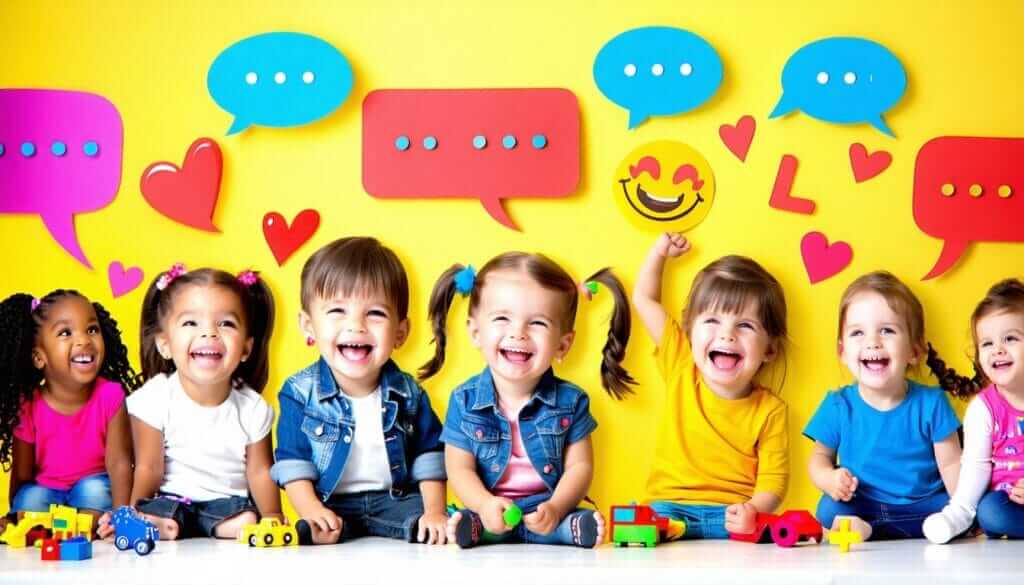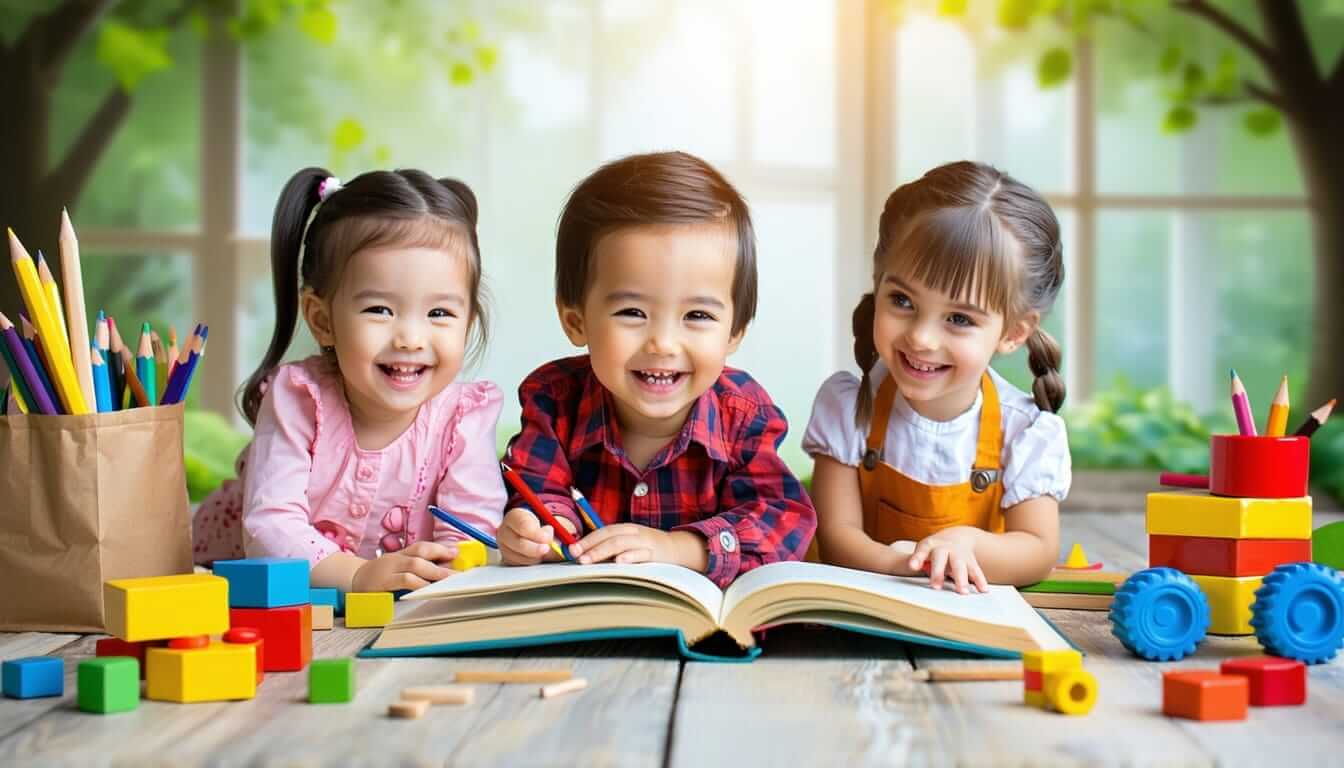Developing a Positive Mindset in Children
Importance of Positive Communication
Talking kindly and often with your child works wonders for building warm relationships and helps them figure out themselves and the bigger picture of life. The more you chat positively, the fewer the unwanted behaviors, making it a handy parenting tool (Extension Missouri).
You’re the first hero in your child’s storybook when it comes to learning how to communicate. They watch you like a hawk. That means when you follow through on your promises, you teach them trust and strengthen your bond, giving them the tools to think positively and chat effectively with others.
Active Listening Techniques
Listen, really listen—sounds simple but it’s magic against mix-ups and squabbles. Focus like you’re listening for buried treasure. Your goal is to understand, making it a safe space for your child to open up (brightwheel).
Here’s some listening magic to work on:
| Technique | Description |
|---|---|
| Reflective Listening | Parrot back your child’s thoughts in different words to show you get them. This can help them talk freely and open up (UNICEF Parenting). |
| Non-Verbal Cues | Let your body, eyes, and nods do the talking, showing you’re all in. |
| Ask Open-Ended Questions | Go beyond yes/no questions. Ask stuff like, “What made you smile today?” to dive deeper. |
These tricks make your talks with your child quality time. They help weave the fabric of their positive thinking and chatting skills, which is like giving them a map to navigate life confidently. For more on sparking positivity or building resilience, check out positive thinking activities for children or teaching children optimism and resilience.
Emotional Intelligence in Child Development
Understanding and Expressing Feelings
Helping your child get a grip on their emotions? It’s all about assisting them in naming what’s inside. Start with the basics—describe feelings as happy, sad, relaxed, angry, or joyful. Using simple words helps make emotions less like mystery guests and more like familiar friends they can invite in and chat with.
But that’s just the beginning. Let’s talk about the power of listening—really hearing what your child’s trying to say. When they pour their heart out, avoid jumping in with your two cents. Just listen. This makes them feel valued and gives them the courage to share more. Drop a compliment when they hit the emotional jackpot by using words to describe how they feel—this lifts their spirits and makes them more aware of those big emotional wins. Curious for another positive activity? Swing by our piece on positive thinking activities for children.
| Emotional State | Suggested Expression |
|---|---|
| Happy | “I’m super happy when we hang out together.” |
| Sad | “I get bummed out when my friends won’t play with me.” |
| Relaxed | “Reading a book makes me feel chilled out.” |
| Angry | “I’m annoyed when things don’t go my way.” |
| Joyful | “Seeing my family makes me feel on top of the world.” |
Leading by Example
You’re in the driver’s seat when it comes to your child’s emotional ride. Your behavior packs a punch when it comes to shaping how they deal with the messy world of feelings. By showing love, dishing out forgiveness, and keeping the vibes positive, you’re handing them a blueprint for how to handle emotions and communicate with others.
Chatting positively on the regular not only helps your kiddo understand themselves better but also makes the world seem a little less scary. This kind of mindset works wonders on nixing those pesky negative behaviors. Gratitude and finding silver linings? Total game-changers for boosting their confidence and sense of self. Want more of the good stuff? Dive into our insights on instilling positivity in child development.
By modeling the way, you equip your child to handle emotional turbulence and build relationships with savvy. This emotional intelligence gig? It’s a lifelong pass to smoother sailing. For even more about boosting optimism and grit in your little one, check out our write-up on the perks of teaching children optimism and resilience.
Encouraging a “Yes I Can!” Attitude
Helping your child develop a “Yes I Can!” mindset is like giving them a magic wand for tackling life’s ups and downs. It’s all about nurturing problem-solving skills with a dash of optimism and a sprinkle of resilience. This approach shapes them into confident kiddos ready to take on the world.
Teaching Problem-Solving Skills
Kids with problem-solving powers are like mini-superheroes. They gain confidence, stand on their own feet, and bounce back from challenges. It’s like giving them a fresh pair of eyes to see things from new angles (Marlborough School). By learning to crack problems early, they’re better prepped for life’s big adventures.
How do you teach them problem-solving? Here are some fun tricks:
| Idea | What’s It About? |
|---|---|
| Encourage Exploration | Let them try new things without worry. It’s like their own decision-making playground. |
| Pose Open-Ended Questions | Toss questions that make them think hard and look for different answers. |
| Model Problem-Solving | Show off your own brain-waves so they learn by watching you piece things together. |
| Celebrate Efforts | Give a high-five for their problem-cracking attempts, boosting their inner champ. |
| Role-Playing | Dive into role-play fun, tackling imagined problems hand in hand. |
Kids picking up on these skills early aren’t just set for lifelong learning. They stay curious and pumped up, superpowers the workplace loves.
Cultivating Optimism and Resilience
Raising a tough cookie means teaching them to bounce back. When they’re cooler than a cucumber under pressure and more upbeat than a cheerleader, they’ve got a fighting spirit for the long road ahead (Medium).
Here’s how to nurture that optimism:
| Strategy | What You’ll Do |
|---|---|
| Encourage Gratitude | Show them how to spot life’s silver linings, maybe with a gratitude journal or a chat. |
| Teach Coping Mechanisms | Arm them with stress-busting tricks like deep breathing or pep-talks. |
| Set Realistic Goals | Guide them into setting goals they can really hit, teaching effort always pays off. |
| Share Success Stories | Tell tales of folks who’ve bounced back, proving sunny attitudes win the day. |
| Create a Supportive Environment | Build a home where making mistakes is just part of learning, and feelings are safe to share. |
Singing praises with thoughtful and genuine words can really boost your kiddo’s mood tanks. They’ll figure out how to see their wins and cheer themselves on (Medium).
Sprinkling their life with problem-solving lessons and bright, positive vibes is a recipe for a cheerful and communicative future. Browse our list on happy brain activities for kids and find ways to spark positivity in young hearts for a brighter tomorrow.
Fostering Emotional Well-Being
Helping kiddos feel good about themselves inside out means setting them up for all-around success. We’re talking about stuff like saying thanks, keeping the vibes at home positive, and opening up their minds to new experiences and learning, much like digging into a gigantic bucket of wisdom.
Fostering Gratitude and Positivity
Getting youngsters to see the glass as half-full and appreciate life’s little blessings works wonders for their confidence and happiness. Here’s a few tips to sprinkle that gratitude magic around:
-
Gratitude Journals: Make it a habit for your little one to jot down three things that put a smile on their face each day. This tiny task helps them see all the good stuff that’s part of their lives.
-
Daily Reminders: While munching on dinner or hanging with the fam, take turns sharing one cool thing that happened that day. It’s like passing around a bucket of smiles and good vibes at the dinner table.
Doing these simple practices helps kids see the world as a sunnier place, and that positivity is like a secret sauce for calmly handling emotions. Check out more about building a positive mindset and emotional control in children.
Creating a Positive Home Environment
A house full of giggles and fun stuff makes it feel like the safest place on earth for a kid. Here’s how you can whip up that feeling:
-
Model Positive Behavior: Your little ones are like sponges, soaking up your attitude. Show kindness, dish out love, and let things go-It’s like giving them a roadmap for how to handle stuff.
-
Promote Fun Activities: Ditch the dull routine with games, storytelling, maybe a goofy dance-off. It builds strong bonds and makes every day full of sunshine.
-
Encourage Open Communication: Make sure you’re all ears when they talk. Show you care, listen without cutting them off, and always validate their feelings.
| Fun Home Stuff | Why It’s Awesome |
|---|---|
| Showing Love and Respect | Boosts those warm fuzzies inside |
| Making Fun a Priority | Keeps stress away and happiness close |
| Keeping the Conversation Going | Builds trust and smarts |
By adopting these habits, you’re setting the stage for your child’s emotional tune-up. Being part of their journey in better communication skills through positive vibes will pack a punch toward their growth and tough spirit.
Effective Communication Strategies
Talking to kids is like assembling complex IKEA furniture without the instructions, fun but definitely tricky! Here, we’re gonna chat about how to tweak your way of chatting and why scribbling things down can sometimes open a window to their world.
Adjusting Communication Styles
Kids are like snowflakes—no two are the same. Figuring out how your child prefers to talk can make your connection stronger. Do they want you to spell it out for them or are they more “go with the flow”? Matching your vibe with theirs can pave the way for smoother interactions.
Some tips to help you out:
| Child’s Preference | Communication Style |
|---|---|
| Short and sweet | Stick to clear, no-nonsense instructions |
| Visual fans | Use drawings or charts |
| Chatty types | Have talks and get storytelling |
| Hands-on types | Go for activities that let them explore |
Tuning into what makes them tick builds understanding and makes talking more natural. Just remember, this is a two-way street—ask for their thoughts on how you chat and be ready to tweak your style. The more you chat like this, the tighter your bond gets.
Promoting Understanding through Writing
Got a kid who’s hesitant with words? Writing might just be their jam! Jotting down feelings or hashing out disagreements on paper makes it easier to open up. It’s a quieter way to speak their mind, leading to a healthier way of talking things out.
Here’s some writing magic to try:
| Writing Activity | Why It Rocks |
|---|---|
| Journaling | Aids in sorting through emotions and self-thought |
| Writing letters | Gets the feelings out in the open |
| Crafting stories | Boosts creativity while sharing feelings |
| Recording awe moments | Daily focus on life’s little wonders |
Adding these writing exercises to everyday life doesn’t just improve communication, it also sharpens emotional smarts. Research backs this—spotting daily wonders can lift spirits and grow self-love (Big Life Journal).
Blending talking and writing gives your child the tools they need to express themselves clearly. This base is crucial not just for a happy mindset but for being able to chat with the big wide world out there. Looking for more ways to get your kid talking positively? Check out our guide on promoting positive self-talk in children.
Building Resilience and Coping Skills
Giving your kid the tools they need to bounce back from life’s bumps is super important for their peace of mind. Teaching them to roll with the punches can help them face challenges without crumbling.
Developing Emotional Resilience
Getting a child to stay strong through trouble isn’t just a nice-to-have—it’s a must. It’s not about avoiding stress, but about teaching them to deal with it. Teaching optimism and gratitude as their first line of defense can make a big difference in their coping game (Positive Psychology). Encourage your youngster to find silver linings and see the bright side, even when life feels a bit stormy.
Here’s how to beef up your kid’s emotional resilience:
| Trick | What It Does |
|---|---|
| Cheer on the Little Wins | Celebrate small victories to build their confidence and keep a sunny outlook. |
| Solve It Together | Have your child think about challenges and brainstorm solutions, boosting their problem-solving skills. |
| Breathe Deep | Include relaxation techniques like meditation or breathing exercises to help them chill out in tense situations. |
| Join the Crew | Get them involved in community efforts or helping others, which boosts self-esteem and a sense of belonging (Big Life Journal). |
Want more resilience tips? Check out our insights on teaching optimism and resilience to kids.
Encouraging Positive Thinking
A sunny mindset can do wonders for a child’s emotional health. When kids learn to see possibilities instead of roadblocks, they’re in a better spot to handle what life throws their way (Big Life Journal).
Make positivity a habit with these tips:
| Method | How It Works |
|---|---|
| Talk Yourself Up | Train your kid to swap negative thoughts with “I can do this” kind of self-talk. Example: Turn “I can’t” into “I’ll give it a whirl.” (promoting-positive-self-talk-in-children). |
| Thanks-a-Lot Journal | Ask them to jot down stuff they’re grateful for. It’s a simple way to focus on life’s positives. |
| See Success in Mind | Guide them to imagine succeeding in different scenarios. It helps them prepare mentally for challenges ahead. |
Diving into these activities helps your child nurture a positive mindset, making them more robust in dealing with life’s ups and downs with grace. Want more on fostering positive vibes? Check out our guide on positive thinking activities for children.
Encouraging the right mindset and good vibes in kids isn’t just a feel-good exercise—it’s key for their emotional resilience and smooth sailing in daily life.




